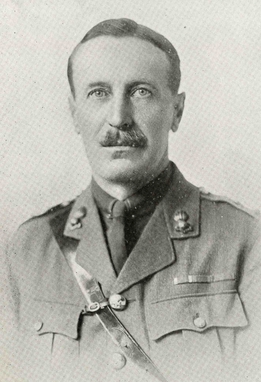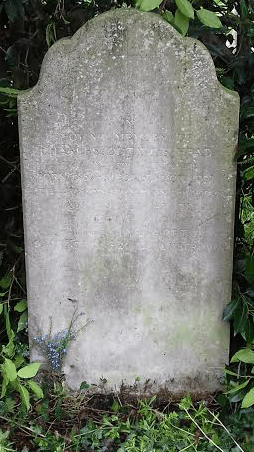Charles Octavius Head facts for kids
Lieutenant-Colonel Charles Octavius Head, who received the DSO, was born on May 30, 1869, and passed away on October 16, 1952. He was an Irish colonel who served in the British Army. Charles Head also wrote four books, including his autobiography, No Great Shakes. His family home, Derrylahan, was destroyed by fire during a time of conflict in Ireland. Head later moved his family to Hinton Hall in Pontesbury, Shropshire, England. Sadly, his home near Pontesbury was also destroyed by an accidental fire, which burned many of his books. This makes his written works quite rare today.
Quick facts for kids
Charles Octavius Head
DSO
|
|
|---|---|

Head in 1917
|
|
| Born | 30 May 1869 Derrylahan Park, Rathcabbin, County Tipperary |
| Died | 16 October 1952 (aged 83) |
| Buried |
Cruckton, Shropshire
|
| Allegiance | United Kingdom |
| Service/ |
British Army |
| Years of service | 1887–1910 1914–1918 |
| Rank | Lt. Colonel |
| Unit | 141st Battery of Horse Artillery / 29th Brigade, 4th Division |
| Battles/wars | First World War |
| Awards | DSO |
| Top - 0-9 A B C D E F G H I J K L M N O P Q R S T U V W X Y Z |
Growing Up in Ireland
Charles Octavius Head was born on May 30, 1869. His birthplace was Derrylahan Park in Rathcabbin, County Tipperary, Ireland. He was the eighth of eleven children. His parents were William Henry Head and Isabella Biddulph. Both of his parents came from well-known landowning families in Ireland.
Charles had three brothers and four sisters. He went to a boarding school in Bray, County Wicklow. Later, in 1885, he joined the Royal Military Academy in London. He was a very good horseman and even won the academy's Riding Cup. After graduating in 1887, he joined the Royal Horse Artillery.
In 1908, Charles Head married Alice Margaret Threlfall. They had three children together: Elizabeth, Isabel Grace, and Michael.
A Life in the Army
Charles Head began his military career as a lieutenant in 1890. He was promoted to captain in 1897. He served in many different places around the world. These included India, China (after the Boxer Rebellion), and South Africa (during the end of the Second Boer War).
He became a major in 1902. In 1905, he returned to Ireland. He was assigned to the 141st Battery of the Royal Horse Artillery. His last job before retiring was commanding B Battery in India.
Head first retired from the Army in 1910. But when WWI started in 1914, he was called back to serve. He fought in major battles like the Battle of the Somme and the Battle of Passchendaele. He commanded the 29th Brigade, 4th Division. After WWI ended, he retired from the Army for good. He received the China Medal for his service. He also earned the Distinguished Service Order with a bar in 1917. This award is given for bravery and leadership.
Life After the War
After WWI, Charles Head returned to his family home at Derrylahan. He became a farmer on his large estate. The house itself was built by his father in 1862. It was designed by a famous architect named Thomas Newenham Deane. In Tipperary, he also served as a local justice of the peace, helping with legal matters.
Sadly, his home at Derrylahan was destroyed by fire in July 1921. This happened during a time of conflict in Ireland. After this, Head moved his family to England. They settled at Hinton Hall in Shropshire.
While in England, he wrote four books. One was his autobiography, No Great Shakes (1943). He also wrote three military books:
- The Art of Generalship: Four Exponents and One Example (1929)
- A Glance at Gallipoli (1931)
- Napoleon and Wellington (1939)
His 1929 book, The Art of Generalship, looked at the military career of the Duke of Wellington. It also compared battles from Wellington's time to those in WWI. Charles Head's interest in Wellington was personal. His grandfather, Michael Head, had served in Wellington's army against Napoleon.
Charles Head's writings about his experiences in the Somme have helped historians understand the British campaign better. In A Glance at Gallipoli, he looked closely at the military decisions made during the Gallipoli battle. In 1950, an accidental fire at Hinton Hall destroyed most of his personal papers and books. This included many copies of his own works.
Family's Lasting Impact
Charles Head's son, Brigadier Michael Head, was a successful amateur race car driver. Michael's son is Sir Patrick Head. Sir Patrick is famous for co-founding and being the technical director of Williams Grand Prix Engineering, a well-known Formula One racing team.
Michael's daughter, Sara Day, is also an author. She wrote a book about the Head family in Ireland called Not Irish Enough. This book adds to her grandfather's autobiography. It tells the story of the Head family from when they first arrived in Ireland. It also explains how the last landowning part of the family left Tipperary after the fire at Derrylahan.



